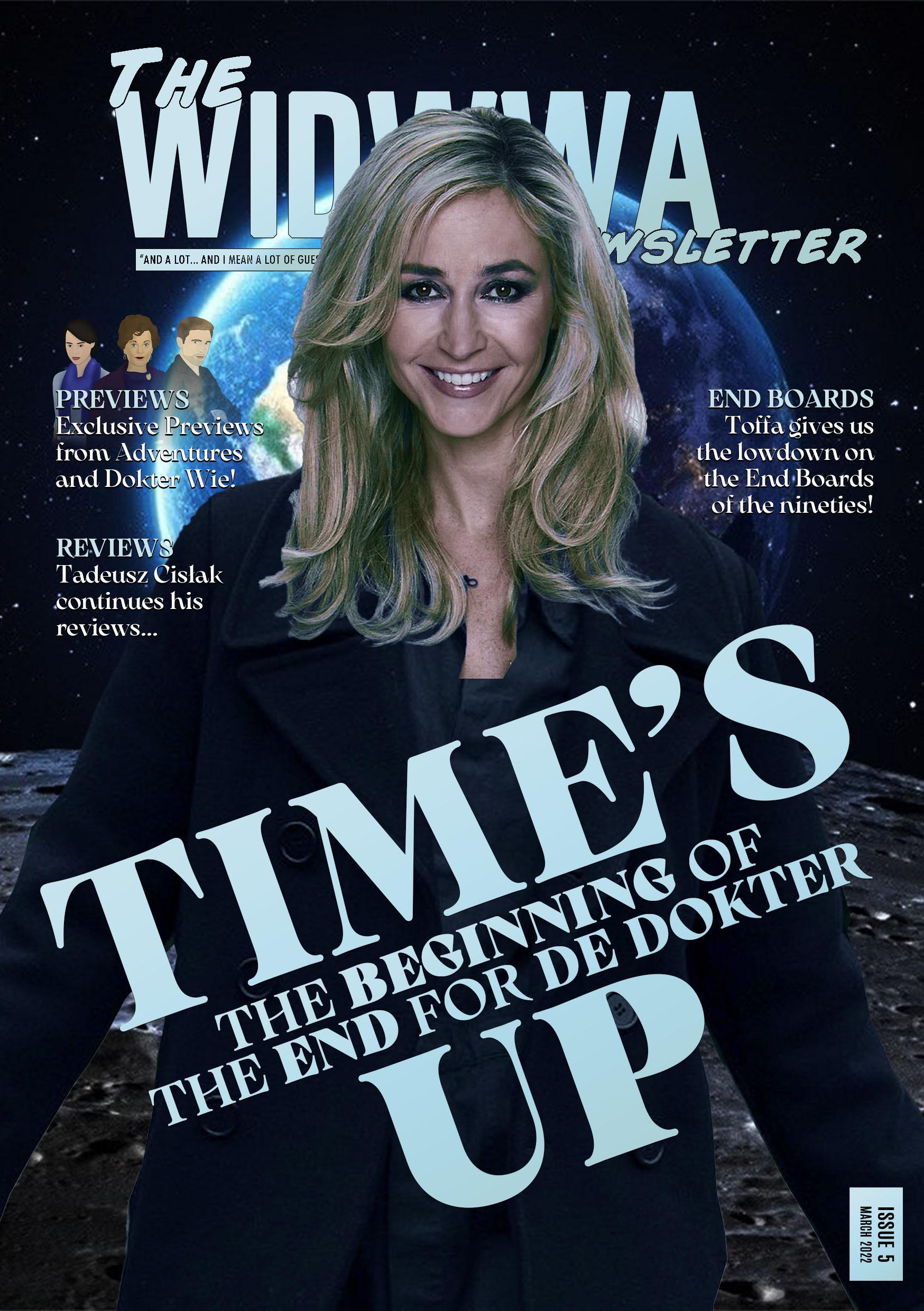
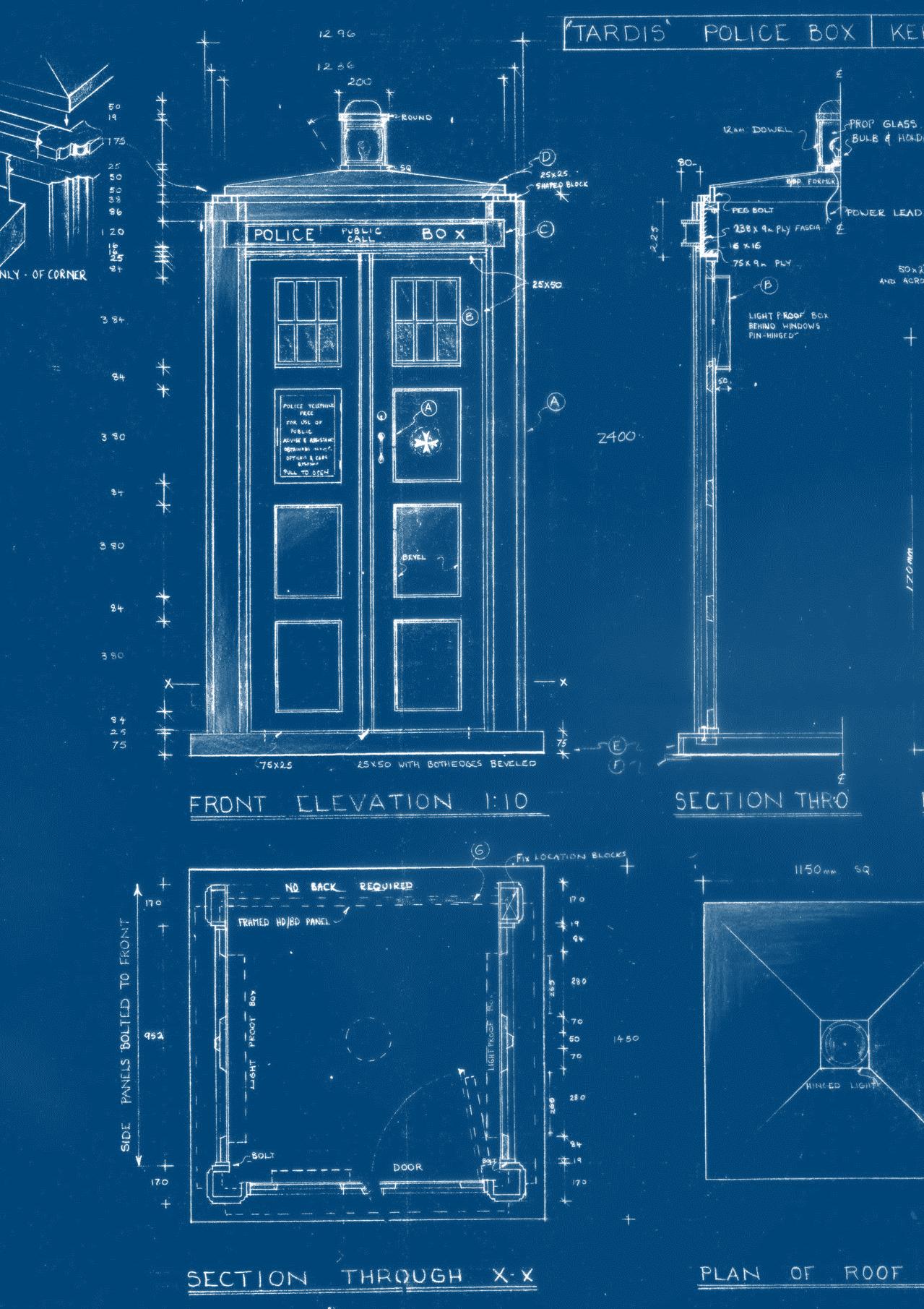

Regulars 2 WIDWWA News 4 From the Fans 5 The Companion Factor 14 Logo-polis 16 Time Capsule 18 Reviews 20 Features Three is the Magic Number 6 The End Board 12 Previews Doctor Who: Adventures 10 Dokter Wie 11
Welcome back to the WIDWWA Newsletter, and for our fifth-month anniversary! For something people were a bit sceptical of, at first, it’s become the centre-point of the community, over the past five months, and I couldn’t be more pleased.
This month, we wrap up Doctor Who: Adventures’ third season and head into Dokter Wie’s third and final season. There’s loads of exclusive details inside these pages, so sit back with a cuppa and relax on a fine Pancake Day morning!
I can happily inform everyone that, although an initial dip occurred after we caught up with real time, the WIDWWA Wordpress is back up to a high readership rate, having recovered nicely throughout the run (so far) of Doctor Who: Adventures. I hope you all continue to stick around the next few months, as Dokter Wie airs... a very exciting season!
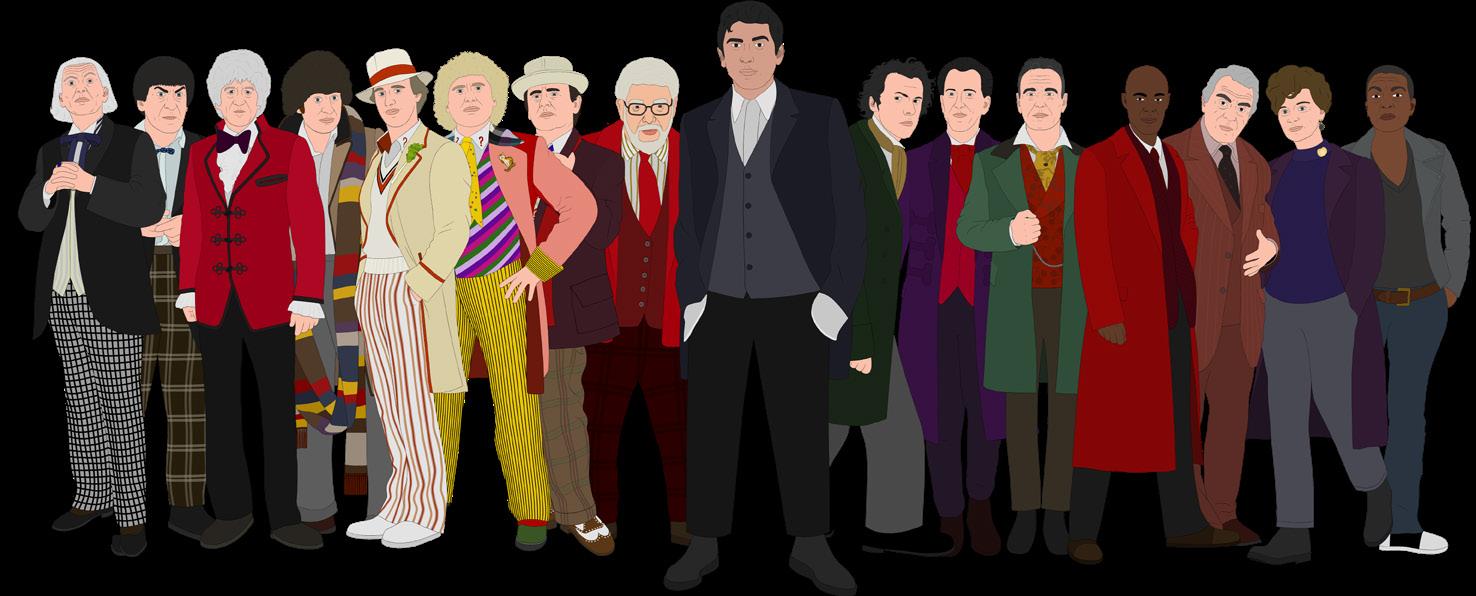
There’s still no new fan fiction being published this month, as the three currently in development, aren’t done yet. If you want to submit an idea, please follow the instructions on the back page as per usual.
Like last month, our new reviews section continues, and although Toffa isn’t returning to talk about Viewing Figures, he is back once again, this time to talk about an even niche-er subject... End Boards! What are they, you ask, well go to Page 12 to find out. Yes, it’s incredibly niche but WIDWWA itself is incredibly niche.
Finally, I’d like to thank everyone for their lovely feedback about our revamp in the last issue. It’s great to hear how much you are all enjoying the Newsletter and how much this refresh has made it even better. The new look continues in this issue,

as we move from a purple to a blue, to match with this month’s cover. I wonder how many months it’ll take until we have to reuse a colour? We’ll just have to see. Anyway, enjoy the issue, engage with the community and
releases and you can’t go wrong!
spring approaches,
gets a little better this month.
read our
Happy Pancake Day and happy March... As
hopefully the world
Welcome DDWF 3 March Releases 7 March - 17:00 Doctor Who: Adventures - Series 3, Episode 8 14 March - 17:00 Doctor Who: Adventures - Series 3, Episode 9 21 March - 17:00 Doctor Who: Adventures - Series 3, Episode 10 24 March - 19:00 Dokter Wie - Season 3, Episode 1 31 March - 19:00 Dokter Wie - Season 3, Episode 2 Releases will appear on the WIDWWA Wordpress (widwwa.wordpress.com) at the time specified on the release schedule, on the day specified on the release schedule. All times are in UK time.
WhoStudios to take over production of Doctor Who franchise
8 February 2022
It has been announced today, that production of the Doctor Who franchise will be transferred to WhoStudios, a brand-new production company, created as a joint-venture by BBC Studios and ViacomCBS. The company take over production of the Doctor Who franchise’s television output, while the company will co-produce the upcoming eighth Doctor Who film with Paramount Pictures and BBC Films.
Mal Young, Doctor Who’s Franchise Executive and WhoStudios’ Founder, says: “WhoStudios epitomises exactly what my aim with Doctor Who has been since I was established in my present role, two years ago. WhoStudios will be a world class production company, making world class drama in the Doctor Who universe, and beyond.”
WhoStudios will slowly take over production of the Doctor Who franchise over the next two years, from BBC Studios and CBS Studios. The first production they will oversee will be the new untitled BBC Three spinoff series, which begins filming in June. All 13-episodes of Doctor Who: Season 56 will be produced by BBC Studios; however, it will be the last. Season 57, onwards, will be produced by WhoStudios. Season 4 of Doctor Who: The New Renegade will be produced by WhoStudios, while Doctor Who: Adventures will be produced by WhoStudios from Series 5. WhoStudios will initially open two production hubs, one in the Greater Manchester area and the other in Toronto. The Greater Manchester production hub is expected to open within the next few months, while the Toronto hub is expected to open toward the end of the year.

WhoStudios will not be producing the Doctor Who foreign adaptations.
ViacomCBS becomes

Paramount
16 February 2022
In move that surprises, no one, ViacomCBS have decided to rebrand under the name Paramount, matching their biggest subsidary, Paramount Pictures, and their streaming service ViacomCBS. One thing is for sure, the Paramount Deal is now, once again, a very apt name!.
Dokter Wie to end with ten- episode adaptation of ‘Doctor Who: Endgame’ 22 February 2022
It has been announced that the upcoming third season of Doctor Who’s Dutch adaptation, Dokter Wie, will, not only be its final season, but will also be a 10-episode long adaptation of the 2012 movie ‘Doctor Who: Endgame’. This comes after the 2019 announcement that Wendy van Dijk would not be continuing beyond a third season of the show, which was originally scheduled for 2020.
Maggy Chan says: “Dokter Wie was our first foray into adapting Doctor Who, specifically for other markets, and it has been a big success. The people at NPO decided, last year, that they did not wish to continue the show without Wendy, and in consultation with Mal [Young], the idea for this adaptation was proposed.”
The upcoming season will be branded, with a subtitle, as ‘Dokter Wie: Eindspel’. The move comes from an internal branding decision from NPO, to not only communicate the show is ending, but also that the show is back, after such a long absence. A big marketing push in the Netherlands is expected throughout the next few weeks.
Mal Young says: “With the changes at Paramount over the past few years, we have an opportunity we wouldn’t have had with Dokter Wie, before the coronavirus delays, to give audience members the most epic story that has been attempted on a television show of Dokter Wie’s budget. You are really in for a treat. Wendy is brilliant!”
WIDWWA NEWS
4
All the important announcements from February in the WIDWWA universe!
FROM THE FANS
Here are some of your thoughts from the past month! These were originally posted as seperate Discord messages but now compiled into a singular letter for you to read.

TimeLordMaster108 7-28 February 2022
So, here are my thoughts on The Great Experiment.
This was definitly the first dud of the Season. It starts off really well with a great mystery and the TARDIS team attempting to solve the dissapearance of Danielle, Roger and Erin, but then when we meet Dr. Van Striten, it devolves into a very generic and very silly plot. Seriously, all that builld up and it’s just some generic mad scientist wanting to make a super person.
So, I’ve just seen the latest episode of Adventures, and after last week’s dud, this one was a strong return to form.
I once again enjoyed the focus on another historical figure, but unlike Patriarch, I am actually familiar with L.S. Lowry.
The return of the Yarra was an unexpected but welcome surprise, I honestly liked them in this episode, and the rather creepy fact that they were inhabiting the lifeforce of the factory workers, which also drains away the life and character that inspired Lowry’s pictures.
And it could have been unintentional, but I see it as a kind of metaphore for how when somebody is emotionally exhausted, the creative spark and character is lost. I dunno, that’s how I kind of see it.
Right, so here are my thoughts on The Layer Before.
It was meh. I did like the whole idea of it being a prequel to Orphan 55 and how they uncovered some old (to them) relics from Earth’s history, and the designs for the monsters were pretty cool.
However, I felt like the episode was mostly dull, with a few funny moments. The battle with the monsters was cool, but the ending was a bit abrupt. Also, there was no world building for this period in Earth’s history.
I really hope this episode ties into the finale, so that maybe we can learn what those monsters were.
So, that was Heart and Mind. Honestly, going into the episode, I had no idea what to expect, but I was plesently surprised.
plesently surprised.
This episode was really enjoyable. The strange mystery of most of Earth’s population dissapearing was good and very gripping. The early scenes of the TARDIS trio exploring the abandoned city had a nice, creepy atmosphere to them.
Josh and his friends are likeable characters and thankfully don’t turn into annoying kid characters.
The Silenced were surprisingly unique and interesting villains. I loved the motivation of them trying to get rid of ignorant and cruel people in order to protect those without a voice.
I also really liked the message that you shouldn’t loath normal people just because you’re different.
My only gripe with the episode is the resolution. Josh and his friends sudden powers at the end comes right the heck out of nowhere, with no warning or foreshadowing. And afterwards, they never explain these powers or mention them again.
Federated States of Flanagonia 22 February 2022 10x45 minute episodes... well, it's gonna need all that time just to establish all the lore for Endgame that hasn't been in Dokter Wie.
If it's 10 episodes, I hope we get elements from other stories rather than being just entirely Endgame.
I mean how could we have the Valeyard if we don't even have regeneration yet in Dokter Wie? The Oplichter will take on the Valeyard's role.
WimpyKelv12 2 February 2022
I didn't quite like that the 1998 logo due to it looking too different from other logos from the time (not metallic) and looking too influenced by our era's '80s nostalgia. I didn't realize that that the original logo from DWM was apparently designed for the late '90s-early '00s, the writeup on the logo in the magazine also made me accept it more due to it being a placebo explanation of its development in-universe.
5
is the Magic Number
In 2018, the first of Doctor Who’s brand new foreign adaptations, premiered to the world, in the shape and form of Dokter Wie from the Netherlands. The show first and foremost was about adapting the concept of Doctor Who for the Dutch market, but everyone else, was extremely curious as to just what a non-British version of the show would look like. The BBC decided to make life easier by producing an official dub of the show, to air a few days later on BBC Four, which among other things, allowed British fans to see the show if they wished. This did start an ongoing confusion about who the show (and the other adaptations) was actually for, but anyone with half a brain would realise that it’s for Dutch people, and the BBC’s airing was just a kind curtesy to Doctor Who fans. Anyway, it’s 2018 premiere was a success, and not only paved the way for other adaptations, but also for a second series, airing one year later in 2019.
Sadly, due to unforeseen world events, the show began stalled here. Pre-production on Season 3 had already begun, with a few scripts already written, when COVID-19 hit the Netherlands. Filming was due to begin in May 2020, with a later premiere of November 2020 planned. This didn’t come to fruition. Throughout 2020, attempts were made to start up production, but priorities at NPO had changed, due to the pandemic, and the show was side-lined. Additionally, a change in Season 3, as a whole, was considered during this time, after being suggested by incoming Doctor Who Franchise Executive, Mal Young. This essentially put the show in a state of limbo, until mid-2021, when they finally managed to get everyone onboard to make a start on Season 3.
Back in 2019, Wendy van Dijk, the show’s main star, had decided to leave after the third season, however, she hadn’t quite expected to be making

that third season as late as she did. She did consider not returning for the third season, when approached to finalise her contract in 2021, but was eventually persuaded around to doing it. In that case, there probably wouldn’t have been a third season and the show would have just ended. Speaking of the show ending, it was only during the production of Season 3 that NPO actually made the decision to end the show, with the “Endgame” adaptation, originally intended, to see the Doctor being resurrected and played another actor, as one would expect. However, essentially NPO decided they hadn’t really missed the show, during its 2020 & 2021 hiatus and they didn’t really have much desire to continue it without Wendy. Additionally, with Paramount+ launching in the Netherlands soon, Dutch people would be able to access actual Doctor Who in a Dutch dub extremely easily, potentially cutting into the show’s audience. With all those factors considered, it was decided that De Dokter would die for good at the end of the season.
If we look back at Season 1, the show starts quite humbly with a pretty by-the-books adaptation of ‘An Unearthly Child’ setting up Dokter Wie in the same way Doctor Who did back in 1963. While this is the only Hartnell story adapted in this season, what the
6 Three
show does is take the format and the styles of the Hartnell era, especially with the TARDIS team being an adaptation of the original configuration and applies that to stories from later in the show’s run. Season 1 gives us adaptations of the Long Game, the Seeds of Doom, the Ark in Space, the Time Warrior, the Food of Love and Genesis of the Daleks, all masterfully rewritten to work with the archetypes of Ian, Barbara and Susan.
The most significant, I’d argue, is the finale, and it’s adaptation of Genesis of the Daleks. Here, it adapts it, as the Dokter’s first ever meeting with the Daleks and places the story in an interesting and different context. While gone is the “Do I have the right?”, an arguably stronger Dalek story now introduces them onto the screen. Some elements of the original ‘The Daleks’ was used, as in Genesis the story is more about Davros, so we get some action with the Daleks themselves deciding to try and nuke the Thals, and Stijntje, like with Susan in the original, is used throughout this subplot. What the story does, which fans appreciated though, was showing that alternative vision of Genesis as a “what if the Doctor first met the Daleks through Genesis”, actually at the creation. It succeeds in that, and sets up the Daleks to be fundamentally the main enemy
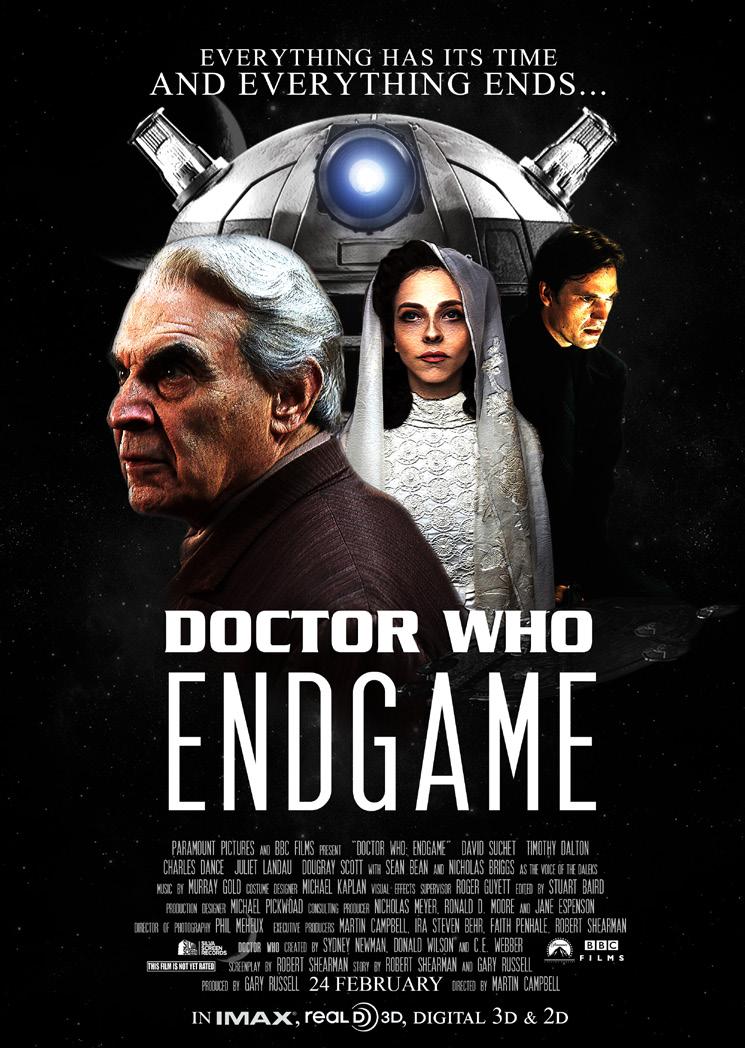
of Dokter Wie, from here on out.


Season 2 pushed the boundaries for the show, now having to follow up on the foreign adaptions from several other countries and begins with the decision to go to Gallifrey. We open with an adaptation of the Deadly Assassin, which much like the original (properly) introducing Gallifrey to the audience, this does the same, expect the whole concept of the Doctor’s race is introduced here too. The stage is also set with the introduction of lots of the Gallifrey Arc characters, from Season 41, being integrated into the Deadly Assassin. However, the most significant thing about this episode is the fact that it introduces the Rogue to the show, taking the place of the crispy Master, although he called De Oplichter (because Dutch). This episode really took the show in a new direction, and one that would end up being very important for the show’s third and final season.
The rest of Season 2 continued to do much the same as Season 1 and adapts stories from throughout Doctor Who’s history but modernised and with the character tropes of the Hartnell era. The stories adapted this time were ‘Kerblam!’, ‘The Impossible Planet’, ‘Paradise Lost’, a combo of ‘The Conspiracy of Pricemart’ and ‘Their Story’, ‘Vengeance on Varos’ and finally rounding off with ‘The Battle of the Strong’. Additionally, the season takes a punt in the dark and adapts another story from another foreign adaption. This was something that was basically done “for the hell of it”, to see whether it would work.
Magic Number 7
The lucky story was ‘Flood of the Millennium’ from ‘Doctor Who: Through Time and Space’. Unfortunately, this adaptation was considered very good, and was heavily criticised, so no one ever really tried to do the same thing again. It did however show a willingness by the show’s writers to experiment and adapt things that people wouldn’t ordinarily expect them to.
The Season 2 finale, an adaption of ‘The Battle of the Strong’ is also strikingly important for the show, as it sets up a lot for the third series. Firstly, the Daleks are once again the main villain, with them invading Gallifrey (not the Cybermen) which once again enforces them as the true enemy of the Dokter. Secondly, we see the Oplichter being thwarted by the Dokter, rather embarrassingly. Thirdly, Borusa is shown as Lord President and we see just how great he is, as he is very instrumental in the resolution of the episode... (I wonder how this’ll be important??). Finally, the episode ends with Stijntje deciding to stay on Gallifrey, and we see an emotional farewell between her and the Dokter.
On-Screen Changes
That now brings us to the third season. As described before, the inception of the idea to adapt ‘Doctor Who: Endgame’ was Mal Young’s idea, and was decided upon for many reasons, but chief of them was kind of just the “for the hell of it” reasoning previously employed. Doctor Who on TV now had the rights to the movies, so it was kind of the Dutch going “if we can do it, then let’s do it, and just see how it goes”... So, Season 3 or Dokter Wie: Eindpsel as its titled, will be the audience seeing if adapting a single movie into a 10x45 minute epic will actually work.
The biggest difference this season is the fact that Stijntje is gone as a companion, but come on, you don’t believe we won’t see her? Yes, I can safely tell you all hat Stijntje will appear, as a main character, for the whole season, although not necessarily as a companion. Originally, the actress had decided to leave, in 2019, but since this was quite a while on and it was the end etc etc, she was happy to come back. That means that Dokter Wie has the same main cast for every single episode it produced, which is kind of cool
Additionally, once again the Daleks are the main villains, but joined by another force... and I could let you guess but it’s pretty obvious. It’s not the Valeyard because he doesn’t exist here, so it’s obviously the Oplichter (the Rogue), who teams up with the Daleks again, after he teamed up with them just an episode before, to seek his ultimate revenge of the Dokter and capture the fabled Omega Machine. I wonder how this’ll go; I think you all get the gist. It’s Endgame but Dutch and with characters shifted about a bit.
A small but significant change has happened on screen for the third season, with the title cards, taking a slightly different format. While one may have thought this change to be perhaps the introduction of the unified title card, you’d be wrong, as this doesn’t apply for foreign adaptations (unless you’re polish), instead this sees changes to fit the show’s serialised nature, and an added credit for the writer on this card, instead of appearing in the end credits.


Obviously, there is going to be a load of original stuff here too, as this season is a lot longer than 2 hours and 30 minutes, so there’s a lot more subplots and just stuff in general happening. Also, there are a few more adapted stories sprinkled in throughout, which have been rewritten to tie into the events of Endgame and the overall story of the season. I wonder if anyone can guess which ones we’ll see in the show?
So, as Dokter Wie bows out, over the next ten weeks we’ll be seeing perhaps the most action packed and explosive season of a foreign adaptation yet. We know that the Dokter is going to die, we also know that (likely) one of the companions will die on a beach. We know that the Oplichter is hunting for special crystals to power an ancient machine, and we know they’ll be a fist fight in a cargo bay.
What perhaps will retain when thinking about Dokter Wie, more than any other version of Doctor Who, is the main star... Wendy Van Dijk. She’ll have
8
“It’s all down to Wendy”
the privilege of being the singular image for this show, being the only take on the character of De Dokter, being the face of it all. When people think of Dokter Wie it is simply to its main star. It’s a large part of the reason a Season 4 isn’t happening, because Wendy Van Dijk is the Dokter, and the Dutch don’t want to see anyone else in the role. It’s all down to Wendy, fundamentally.

The Dokter, I think, would be a popular version of the character, amongst the fandom. The character was the joy and hope of Jodie Whittaker’s (real life) incarnation, but with the wisdom and the subtle warmth of the First Doctor, which the character is largely based on. Wendy’s Dokter doesn’t follow the mould of the Patrick Troughton-type, with little quirks and zany qualities, but instead follows the original mould – the slightly confused scientist, who just loves exploring the universe. The Dokter’s biggest quality is the optimism and hope, unparalleled in any WIDWWA incarnation, and that’s absolutely what defines her and what will be challenged into the next season.
Speaking of the next season, a preview for the first two episodes can be seen on the next page, with the series beginning later in March! I hope you enjoy this wild ride, and the end to the adaptation that started it all.
9
WIDWWA
Episode Previews

William Caxton – heard of him? Well, I hope you have, however, most of Adventures’ historical figures people have yet to have heard of, despite the show’s BBC Bitesize partnership being all about covering things on the UK school curriculum. Caxton shouldn’t be too much of an issue because he’s been on the curriculum for decades, but you’ll still probably find yourselves learning about him from Adventures, I suppose. Anyway, he’s the bloke who developed the printing press and is pretty important. This episode sees Fourteen, Erin and
We haven’t had a spaceship story in a while, so well, Adventures delivers... a spaceship story. I’m sure you can get the gist of things – The Doctor, Erin and Kyle arrive on a spaceship and the standard story ensues –expect there’s Marauders. Well, Space Marauders.



It’s a nice little story to back onto the finale, and takes us to a rather underused type of Who story in the show.

It difficult to say much about this finale without including spoilers... but what I will say is that the Revoc are involved. Originally, the finale wasn’t going to be this episode. In fact this episode was produced as S04E15, but basically, Espenson realised that people will be mad if the Revoc aren’t addressed in this season, again, so she moved a Revoc-based episode from Series 4, to make the Series 3 finale.
The Revoc were always planned as spanning the entirety of the 20-episode block, and Phil Ford hadn’t considered giving some answers in the middle of that, might be a good idea. So, essentially, we get some answers about the Revoc.
 Series Three - Episode Eight
Series Three - Episode Nine
Series Three - Episode Ten
Series Three - Episode Eight
Series Three - Episode Nine
Series Three - Episode Ten
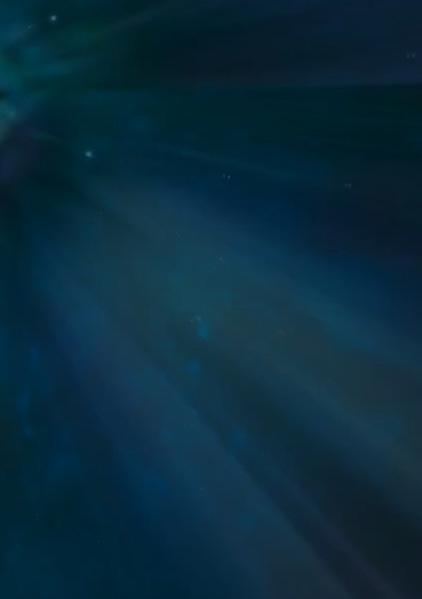


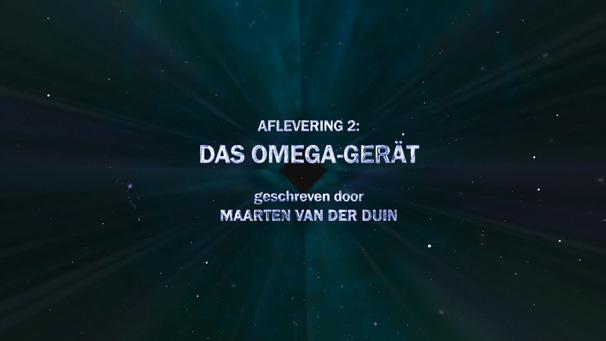
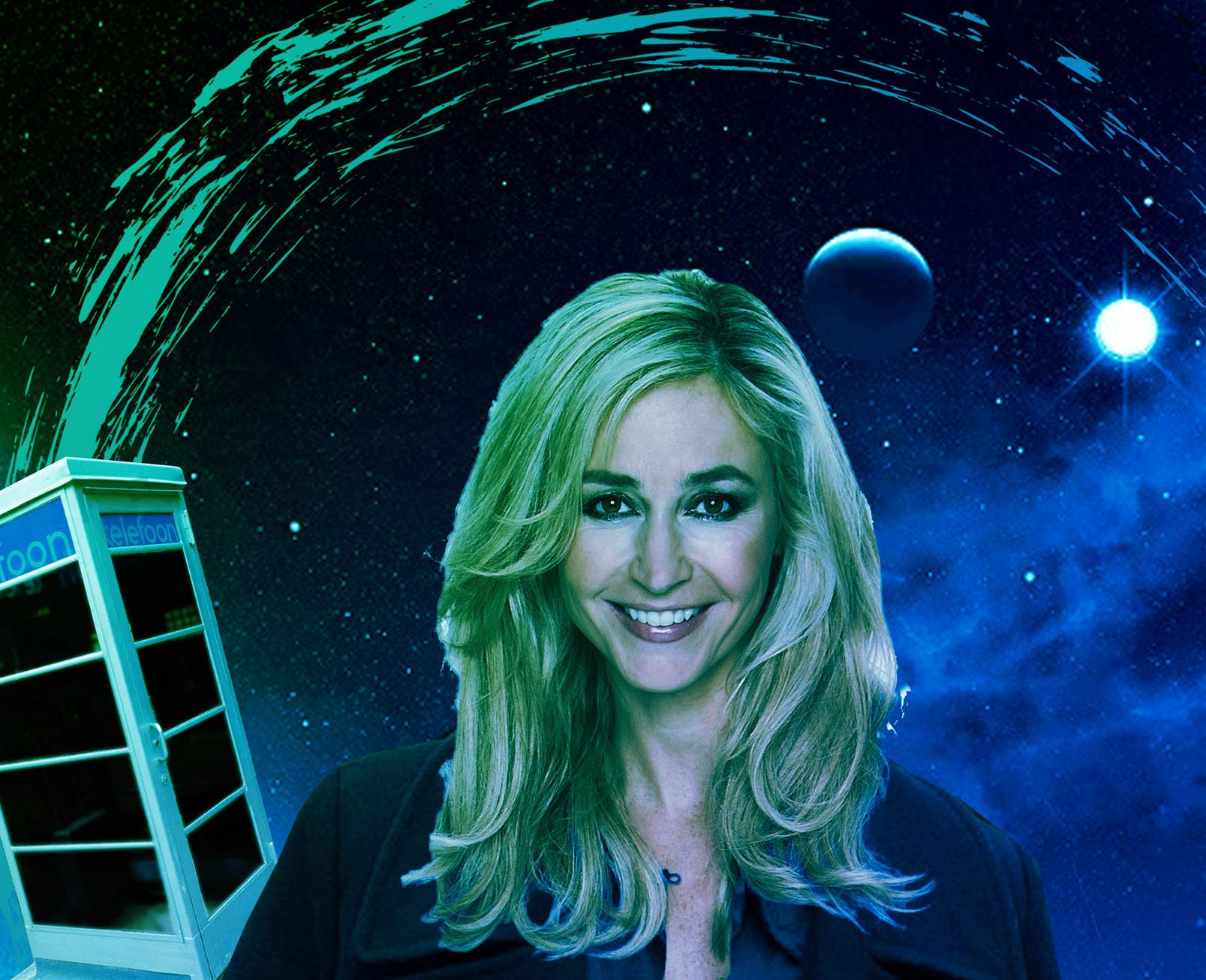
11 Eindspel! That means Endgame, obviously. Heerser Season Three - Episode One Das Omega-Gerät (The Omega Machine) takes us Season Three - Episode Two
The End BOARD
BY
Endboards are often shown at the end of a programme as part of the end credits, which often contains the name of the production company or channel behind the programme, with the copyright and year. In the case for Doctor Who, these have changed relatively frequently over the years in both major and minor ways. This is something that we’ll be looking at over the next few issues in detail, as we begin our journey with a look at the endboards used from Season 27 in 1990, up to Season 34 in 1997-98.
We begin our journey with Season 27, Sylvester McCoy’s last season as the Doctor. Here, we can see that the endboard follows the same style as the end credits used since Season 24 in 1987, with the Doctor Who logo, director credit and the copyright line with the BBC logo and year in roman numerals (in this case for 1990, MCMXC). There is, however, one key difference. There is a change to the copyright strap, with the 1988 BBC logo replacing the previous 1971 one, as most programmes were also doing around this time. The year displayed has also changed font to Futura Italic and is also larger in size than the previous style. Other than this, the endboard remained mostly unchanged from the last few years.
In Season 28 in 1991, Richard Griffiths took over as the Doctor and saw the introduction of a new title sequence on request from new producer, Ian Fraser, as a result, the endboard has been tweaked to reflect
this, but retains the elements of the McCoy era formar. Here, the updated Doctor Who logo is present (the appearance of the logo is the same in both the title sequence and credits), as well as the Director credit, now in the font of Friz Quadrata STD to match the font the show was using at the time, and the BBC copyright line remains relatively unchanged, with only an update to the year, displayed as MCMXCI.


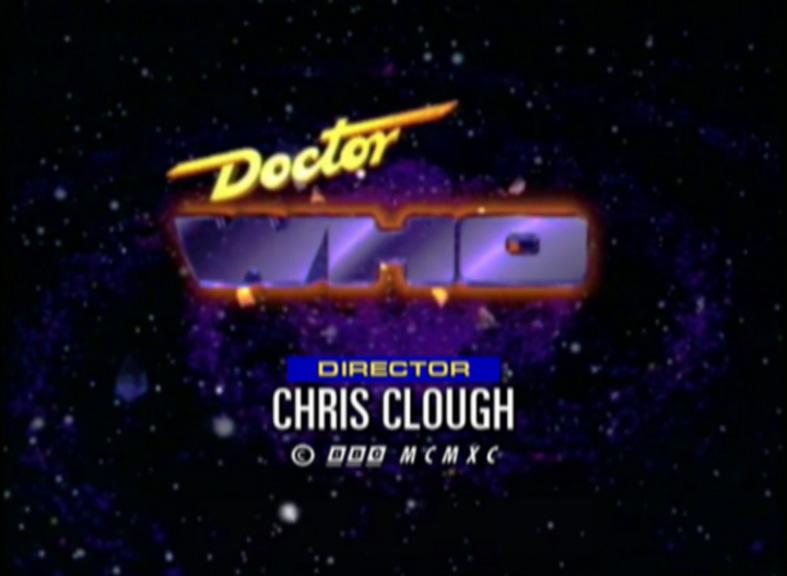

In September 1992, as Season 29 began airing, the BBC made a tweak to the endboards for all its programmes, with a second and larger BBC logo appearing above the copyright line. However, for several programmes, this wasn’t entirely the case, with it often appearing near the top, and even on the top left, or right-hand corners! Fortunately, Doctor
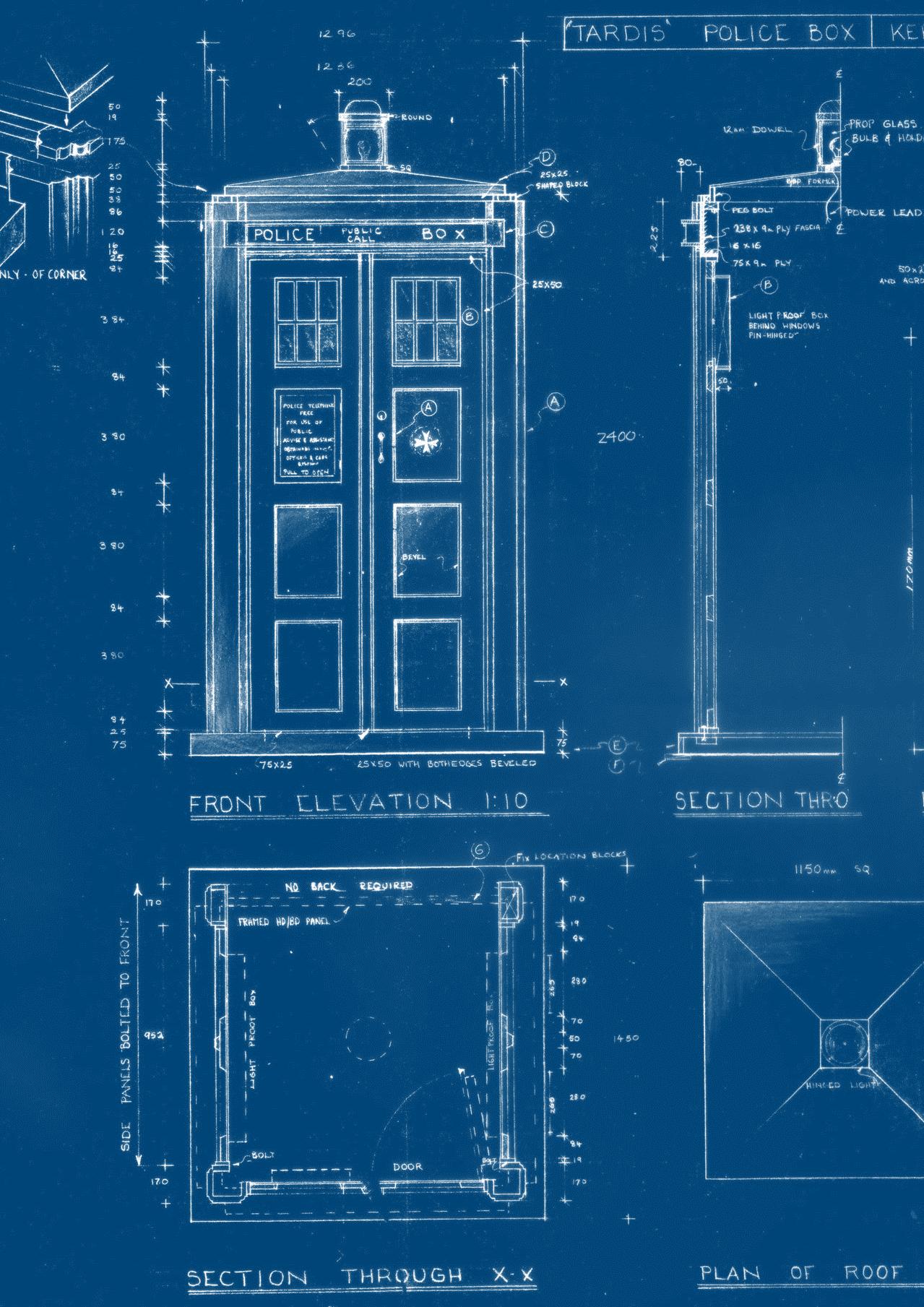
FEATURE
12
1990 1991 1992
Who’s endboard layout introduced the previous season was versatile enough for the larger BBC logo to fit near the bottom. As a result of this, the copyright line was moved to the bottom of the screen and made a little bit smaller, with the large BBC logo placed between it and the Director credit. As Season 29 aired into early 1993, the copyright line was updated from ‘Lucifer Rising, Part Three’ to update the copyright year with the broadcast year. This style was introduced in ‘Nightshade, Part Three’, and remained in use for the remainder of Season 29 and throughout Season 30, being used up until the 30th anniversary special, ‘The Lords of Time’ in 1993.
A brand new title sequence was introduced for Season 33 in 1996 with the introduction of Michael French as the Doctor. The font remained as Assidous. As a result, the endboard was now down to just the Doctor Who logo at the top, and the BBC copyright details at the bottom; remaining similar to the previous setup. This style was used throughout Season 33.






Season 31 in 1994 saw Stephen Garwood take over the producer’s chair, which saw the title sequence receive an update, with a blue colour scheme, the logo in a vortex, and a new font, Assidous. Like before, the Doctor Who logo’s appearance remained the same from the titles, and the BBC copyright details remained unchanged. However, as the new font was much taller than its predecessor, the director’s creidt was moved to the end credits. This endboard was used through the rest of the Griffiths era, up to the end of Season 32.

Two weeks before Season 34 began airing, on 4th October 1997, the BBC received a major corporate rebrand, including a new logo and a new corporate font: Gill Sans. As part of this radical change, the endboard was changed to reflect this, but retained the elements of the previous one, with the newer BBC logo replacing the previous one, and the copyright line now entirely written in Gill Sans. Apart from this, the format remained unchanged, and was used throughout Season 34. Like the previous season and 29, it saw the last three stories of the season match the copyright year with the broadcast year, as they aired during early 1998. Otherwise, this was the style used until the end of the season, and the end of an era.
Goodbye Sunrises!
The Season 33-34 Title Sequence, as you know it, is one of many WIDWWA title sequences employing a different look going forward. This sequence will be released to you very soon... but here’s a teaser, while you wait!
Next time, the second part of our look into endboards goes through Seasons 35-43. Paramount steps into the frame, BBC Wales takes over production, and websites start to become commonplace in BBC endboards during this time. The styles are about to change quite radically...
13
1994 1996 1997
WIDWWA
The Companion Factor Zenla

Zenla is only one of two companions to have been birthed as a result of a Doctor Who movie, and therefore created, in part, by Paramount Pictures. The other one is, of course, Rosalyn Clyne from the ‘Doctor Who: Until the World Ends’. Alongside Chris Parsons, who was based upon a character created by Douglas Adams for the abandoned serial ‘Shada’, Zenla was introduced in ‘Doctor Who: Vengeance’, as a Time-Lord helper to aid the Doctor in the quest the Rogue gives him in the movie. Her backstory when we meet her is very simple, she is a Professor at the Time Lord Academy, a Prydonian, absolutely loyal to the ideals of democracy and most importantly she’s a brilliant scientist.
In ‘Doctor Who: Vengeance’, Zenla fulfilled the stereotypical role that a character with such backstory would usually fill. She also provided “the muscle” on occasion, but while she was an interesting and fun character, mostly carried by Juliet Landau’s performance, she wasn’t the most developed character yet, lacking even her own character arc, which Chris, by contrast, received. In fact, both Zenla and Chris weren’t originally supposed to continue on with the TV show and were only intended to star in ‘Doctor Who: Vengeance’, however, during production of the film, Ira Steven Behr offered the two actors a two-season, plus another movie, contract, which they accepted.
Once we move into Zenla’s time on the television series, her character becomes more established, moving soon away from her Academy Professor backstory and into more of an Emma Peel type character. It was also decided to use the chemistry between Dougray Scott and Juliet Landau in the writing and the episodes often employed flirtatious subtext between the two characters. Over the course of the first couple of episodes of Season 47, Zenla goes from the stoic Time Lord genius to who we know as Zenla. It worked as well, as overall Zenla managed 55 on-screen appearances in the Doctor Who franchise, 23 of them as a companion on the
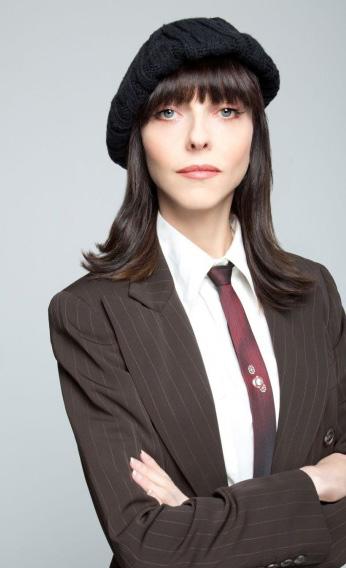
Fact File
Played by Juliet Landau Full Name Zenlafractunlarudau
Born on Gallifrey Occupation Time Lord Academy Professor (later) Chief of Staff to the Lord President of Gallifrey
Travelled with Twelfth & Thirteenth Doctors (Fourteenth & Fifteenth Doctor, briefly) Met the Doctor in 3452, Gallifrey Left the Doctor in 3453, Gallifrey
14
Companion for 23 Episodes
the main show, and the rest on the spinoff series Panopticon.
The most iconic Zenla episode during her time on Doctor Who is argued to have been ‘The Ties In Between Us’, whereby Zenla and Chris are left alone on a planet, and well... nature happens. This finally, after seven episodes of build-up, with her and Chris’ subtle flirting, confirms the fact that she does hold, albeit repressed, feelings for him. This only comes out due to the fact that she is left with Chris with no hope of getting off the planet, and after several years alone together, one night... Zenla gives into her feelings, and we are shown that Zenla is capable of a lot more than he stoic and cold exterior that we initially glimpsed. The episode doesn’t ruin Zenla by sexualising her, as some have argued, but instead humanises her and opens her up... something which is deliberately made into a stark contrasting comparison in Panopticon, when she’s in a similar
position with Gregori. What makes that scene work, is our knowledge of her in ‘The Ties In Between Us’...
What is perhaps the most interesting about Panopticon’s Zenla is that, despite her returning to Gallifrey and to the place in which we initially met her, she bears little resemblance to the Zenla of Doctor Who: Vengeance. It’s barely mentioned that Zenla was ever a professor at the Academy, despite, in her first series, having a prominent plot around the Academy, and instead she undertakes the Chief of Staff role, where she basically fulfils the role of the Emma Peel character, under Gregori.
Many fans would probably argue that it’s in Panopticon that Zenla really comes into her own, developing in ways that she wasn’t able to do under the shadow of the Doctor. Yet, it’s the theme of the Doctor and the Doctor’s passing which starkly marks Zenla’s time on the show. We all remember the famous ending to ‘Survivors’ whereby Connie wakes up and says “Zenla! How good to see you!”.

Honor Blackman, who has portrayed an older Zenla in ‘The Ties in Between Us’, returned to the role, to play an entirely different older Zenla in Season 49’s ‘Remnants’ where the Doctor witnessed Zenla’s death, over a thousand years into the future.
This return to Zenla, post-Panopticon, came to fruition because Moore was interested in revisiting the fleet, in anticipation of the potential launch of the spinoff series, The Elysium, and wanted it to have significant emotional weight to it. This leads to the final of the Thirteenth Doctor’s companions dying; however, Gemma’s death is undone in the very next episode.
Zenla, played by Juliet Landau, would return a final time, for the Fourteenth’s Doctors regeneration story, taking place, chronologically for Zenla, after ‘Doctor’ but before ‘Remnants’. This Zenla, once again, resembled the character of Zenla from ‘Panopticon’ and saw her in her full badass Time Lady fashion. This also gave her the distinctive of sharing the screen with four different incarnations of the Doctor, without appearing in a single multiDoctor adventure, as ‘The Third Planet, Part II’ featured the Fifteenth Doctor for its entirety.
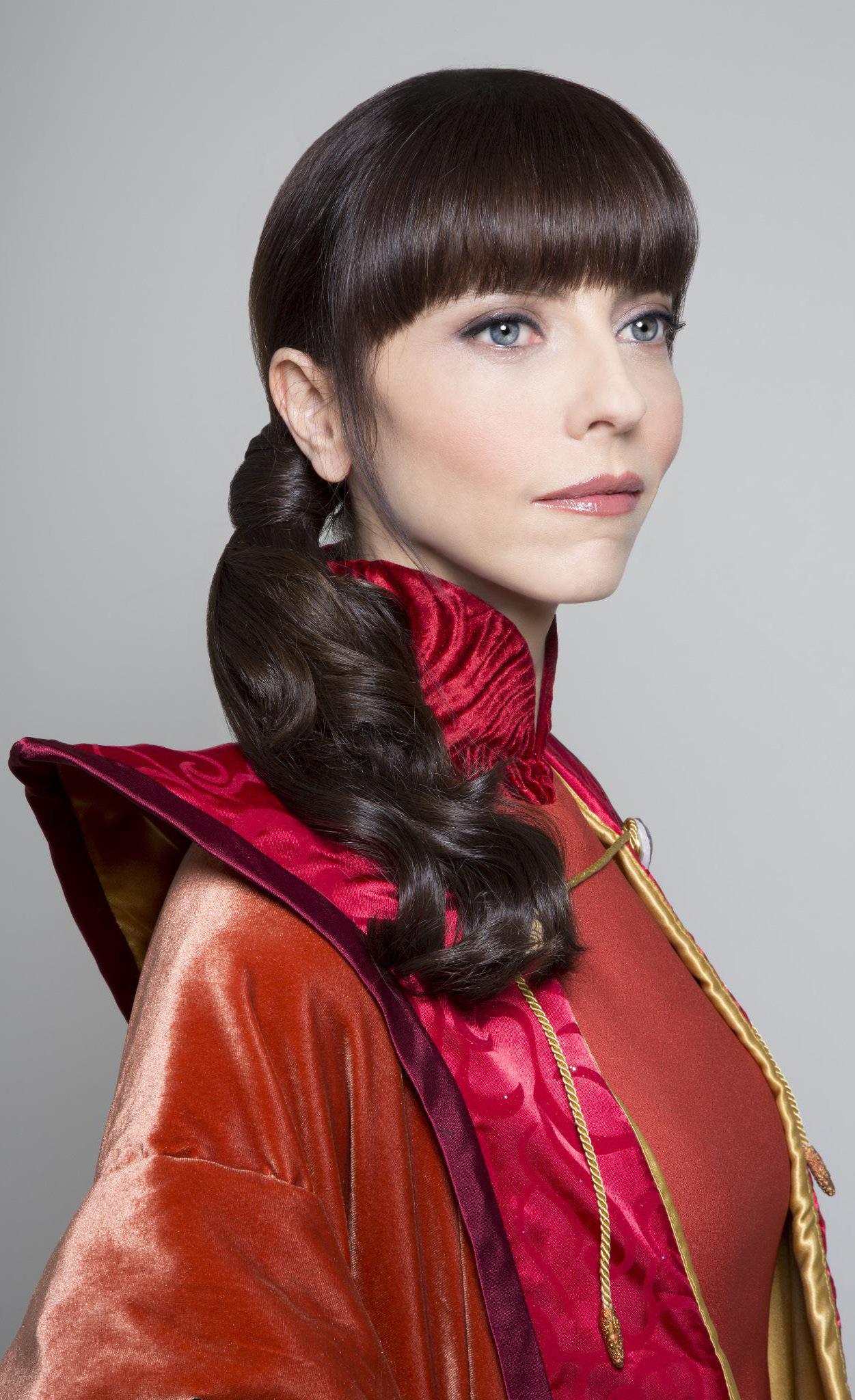
As of 2022, this is the final time we have seen Zenla on screen, but could this potentially change in the future? Who knows?...
Overall, Zenla was one of the most popular ‘Doctor Who’ companions, and was vital to the, somewhat complicated, bridge between ‘Doctor Who: Endgame’ and ‘Doctor Who: Genesis’. Her impact on ‘Doctor Who’ and the franchise as a whole, really cannot be understated.
WIDWWA
15
LOGO
Continuing our look at the WIDWWA logos
The Leftover logo is about as basic as you can get with a logo. The question you might ask is then, “DaDoctorWhoFan, why is the logo so basic?” and the answer is very simple, because Leftover was launched in 2001 as a small BBC drama and at this time, the logo design for these sorts of shows at the BBC was pretty damn awful.
The story of the Leftover logo begins with the development of the series, and an initial working logo which was used on documentation during the show’s commissioning and pre-production process. This logo was barely a logo and just a rushed mocked-up wordtype set in the BBC’s (at the time) corporate font, Gill Sans. Funnily enough, although completely accidental, as the current Doctor Who logo was also in Gill Sans, this had some sort of logo consistency, the likes of which would take another 19 years for the franchise to regain. However, this logo was not to last, as it was always just supposed to be used as a working logo.

The actual Leftover logo, as we know it, came to fruition when the title sequence was created, internally by BBC North. Essentially what happened
was the person making the title sequence needed a logo for the show, so he wrote Leftover into a text box and then scrolled down the list of fonts (not very far) until he got to Agency FB, and then said, “that’ll do”. No one really cared enough to step in and change it, or actually “design” a proper logo, it went in the titles and then stuck.

Interestingly, there was an attempt for the second series to change the show’s logo, as David Renwick wanted a new title sequence for the show – one that was more dynamic.
The concept would’ve been for the camera to land on the “Leftover Extraterrestrial Private Investigators” sign and with a digital effect highlighting the word “Leftover”, however, this never came to fruition due to a lack of time and money. If this had been the case, the Leftover logo would’ve been in Futura Condensed Medium, with a gold look, in contrast to its Agency FB red look, forever iconic for the show.
Twice more the logo nearly changed, with a suggestion of a 1910s style logo for Series 3, which never came to fruition, and Paramount considering changing the logo for Season 4, which again, never happened. While the fandom and many people as
-POLIS
16 LEFTOVER
part of the production never thought highly of the logo, nothing of substance ever really happened to change it. This perhaps represents a wider culture around Leftover.
Merchandising companies, for the show, weren’t given the logo initially, as, at that point, it only existed on the titles, and therefore for the first few

fit. It was mainly useful for the original preretconathon Series 1 titles, where the camera zoomed into the logo’s lettering to show cast names, and I needed something, therefore, with a blocky look that had lots of straight lines. I suppose I had more of an excuse for a bad logo, than the people in universe, being very inexperienced with design at
months, the provisional Gill Sans logo appeared in several places on merchandise. However, the logo we all know took over prominence when the Series 1 DVD was released, which featured the screen used logo. From here on, that logo was used everywhere, all over pretty much anything Leftover released.
The show did, at least, make an attempt to stay away from Agency FB in pretty much every instance. The logo, and Series 1-2’s main cast credits, were the only expectations to this. Although still not a great choice, during Series 1-3, the main font used on the show was Arial (another example of BBC North’s design brilliance), and during Series 3, the main credits on the opening titles, was set in Adine Kinberg, to fit in with the period setting. Season 4, dropped Agency FB for everything but the logo, settling on the equally (but not quite as bad) generic, for the 2000s, font, Bank Gothic. For End of Days, in 2010, CBS opted to use Futura Medium, as the show’s main font.

In the real world, the logo was designed in much the same way, as the dude at BBC North, as a 2016-me needed a logo and just scrolled down until something
the time, and it was also the first WIDWWA logo which I actually completely designed myself, with the 1991 logo coming from an unknown source and the 1998 logo based upon a similar logo by Bernard Lodge. With that being said, it’s still terrible, but I always thought there was enough reason for it to realistically remain, and there wouldn’t be much point in jettisoning it in the retcon-athon. I think it’s perfectly realistic for BBC North in 2001 not to pay much attention to their logo design, as well, this kind of thing happened all the time in this era, often with the added confusion of alternate logos for merchandise, as well.
Overall, the logo is mostly not very good, coming about through a rushed lack of care, but perhaps there is something about its simplicity which does allow it to stand the test of time and remain iconic in its own right?...
Anyway, join me next time as we continue our journey through WIDWWA’s logos as we come to Doctor Who’s arrival on the big screen and a brand new logo, one which would come to become used for longer than any other in the show’s history... WIDWWA
17 LEFTOVER
Time Capsule THE WHITECHAPEL MURDERER
It was only a matter of time before Doctor Who tried to do a Jack the Ripper story, and that time came in 2009, with the Twelfth Doctor adventure ‘The Whitechapel Murderer’.
Victorian London is one of Doctor Who’s most favourite locations, especially when it’s aiming for Hinchcliffian gothic horror, and that’s exactly what ‘The Whitechapel Murderer’ sets out to do. The main premise is pretty simple: The Doctor and Lizzie investigate the Jack the Ripper murders, only to find out that Jack the Ripper is an alien refugee, who needs to feed on human females to survive.

The episode, cleverly, allows this to be a slow burn, however, spending the first hour of the episode just focusing on the Doctor and Lizzie posing as detectives in a very typical Victorian pure historical format, which draws the audience into the mystery surrounding Jack the Ripper and playing on the hurt he is causing. All throughout this, Jack the Ripper is an elusive figure, who the Doctor never manages to quite catch sight of.

I suppose, although not penned by Robert Shearman, this is really one of the earliest notifiable marks of his dark comedy style, which comes to encapsulate the next few seasons, which he oversees. Speaking of writers, this episode sees the return of Mark Wright & Cavan Scott, who had previously
penned ‘The Twilight Project’ and ‘The Lazarus Project’, ten years earlier, which was incidentally when Shearman first wrote for the show and met the two through Season 36’s pre-production cycle. Taking over as Script Editor, Shearman decided to approach them to return, which they did here. If you take a look at their previous two contributions, the DNA of ‘The Whitechapel Murderer’, as well as their later contribution, ‘The Man at the End of the Street’, is easily identifiable.
What is more controversial, is what happens around the 60-minute mark, where Jack the Ripper is revealed to be an alien refugee, fleeing from a war on his own planet, having crash landed on Earth in the 19th Century. His species form of food are a multitude of human bodily fluids, most prominently estrogen, most easily found in women. To survive, Jaquari, the true name of “Jack the Ripper”, finds himself becoming Britain’s most notorious murderer, to collect his food source. To the somewhat horror of Lizzie, the Doctor, upon finding this, completely understands Jaquari and doesn’t try to kill or harm him, instead trying to reason with him.
The Doctor, of course, doesn’t see what Lizzie and the audience sees and instead sees a helpless defenceless creature doing what it can to survive. The Doctor, obviously, wants to stop Jaquari from
Starring Paterson Joseph & Sophie Okonedo
Written by Mark Wright and Cavan Scott and Directed by Tom Shankland First Broadcast on 12 September 2009
18
murdering, but he also wants to help Jaquari and get him somewhere safe, somewhere where he can safely live, with a humane source of his species’ food and away from the war which drove him from his planet in the first place.
So, with about 20-minutes of the episode left, after all this is revealed, the episode decides to make the main conflict to be between the Doctor and Lizzie, as Jaquari is perfectly happy to stop, if given passage in the TARDIS, but Lizzie instead thinks that Jaquari should be punished, whether that be handed into the 19th Century authorities or taken to a higher interstellar authority. The Doctor argues it’s “the end justifies the means” and says it’s not too dissimilar from humans eating animals.
This part does play on Lizzie’s reaction quite significantly, as while she’s been with the Doctor for quite some time, she never expected him to “side” with the enemy, as it seems to her. Lizzie’s reaction is important, because she has to be the audience surrogate here, and that is precisely what much of the audience, after 60 minutes of build-up on how bad Jack the Ripper is, are going to react.
Obviously, the Doctor wins and manages to persuade Lizzie and the audience around to the realities, including getting Jaquari to describe to Lizzie why he left his planet, and the horrors of the war that lay on it. While some might see this episode as one about “the end justifies the means”, it’s really more a commentary on how people should cut refugees some slack. However, critics of the episode argue that it’s message that refugees will come to your country and murder your women isn’t great either. Somehow, I don’t think this is what Wright & Scott intended, and is rather a silly viewpoint, when it’s clear that isn’t the message.
In the real world, the story was the idea of my co-writer, at the time, Matt Moir. When asked for comment about his thought process for the story, Moir said “The Whitechapel Murderer was essentially a way to give us a tone setter within a celebrity historical. Season 46 was going to have darker subject matter, so this story fit the bill. It was also perfect for returning writers we wanted to use.” What Matt says is completely correct, we needed an episode


Robert’s Thoughts
a WIDWWA fan’s view on this story...
The Whitechappel Murderer is an episode that harkens back to one of my least favorite eras of Doctor Who, Because of this, this episode has not resonated with me as much as others have. I am not a big fan of the “The Ends Justifies the Means” message of the episode. It is not in the character of The Doctor let alone the Twelfth Doctor. I love the idea of having Jack
the Ripper as a villain of a Doctor Who episode. But what I do not like is that this episode writes the Ripper as an alien who had to kill people to feed off on their energy. I wish that the Ripper was a real person and not some random alien of the week. While I like that Twelve and Lizzie were put into an episode like this where they bring in some light hearted-ness into a more darker oriented episode.
two to bring the tone down, after the drama heavy, but slightly comedic, opener, and the Whitechapel Murder did that job. It also was imperative that drama began appearing between the Doctor and Lizzie, which would later develop throughout the Tegan arc and into the finale.
The story was needed, fundamentally. A statement had to be made to show that the Shearman era was going to be far darker than the Cornell era that had proceeded it. Not only do we get gothic horror, but we also get a huge moral question and the argument surrounding that, as well as a political commentary about politically relevant conversations. It’s an episode which tries to do a lot, and I think, in my personal opinion, (mostly) sticks the landing and creates a very gripping 90-minutes of drama, in one of Doctor Who’s most favourite historical settings.
Jack the Ripper was bound to be something Doctor Who would do eventually, but I don’t think many expected Doctor Who to quite do Jack the Ripper as an alien refugee who we feel sympathy for. But... that’s Doctor Who for you.
WIDWWA
Release Details
PRINT The Whitchapel Murderer by Mark Wright and Cavan Scott 18 August 2011 DVD The Complete Forty-Sixth Season 29 March 2010 The Paterson Joseph Era 11 March 2013 Chapter Three: The Complete Collection 4 January 2016 BLU-RAY The Complete Forty-Sixth Season 29 March 2010 The Paterson Joseph Era 11 March 2013 Chapter Three: The Complete Collection 4 January 2016 19
Reviews THE GREAT EXPERIMENT
Reviews by Tadeusz Cisłak
The following are reviews for episodes in the ‘What if Doctor Who Wasn’t Axed?’ universe from February 2022. If you have not read any of these episodes, you can do so on the WIDWWA blog which is at www.widwwa.wordpress.com
Doctor Who: Adventures
I don’t want to spent too much time on a very simple story, so I’m just going to surprise by stating that... I enjoyed it. I don’t think this episode is as generic as people say, it’s been a while since I’ve seen a mad scientist with god complex, especially the one that’s not an alien. But even if it is cliché – it’s fun. I’m all for the Doctor and companions just spoiling
the plan of some evil jerk. At least it’s not another space invasion or façade utopia. Not every episode has to break new grounds and challenge our views, fun filler every now and then is alright.
The bigger problem than existence of unambitious episodes are failures of ambitious ones.
Doctor Who: Adventures
OF AMBITIOUS)
MATCHSTALK MEN
Oh hey, L. S. Lowry! It’s that famous painter who... who... ok, I don’t anything more about them. Hey, another learning opportunity, nice. Once again “Doctor meets a celebrity” proves to be great, heck even greater than Patriot, because the TARDIS team actually has their place in it and we don’t have to suffer through ioo kant shenj heestoori again. So... yeah, second great story in a row. We even got Yarra again... Wait, what was Yarra? Oh, right, those arseholes from The Lady With The Lamp that ended up lobotomizing animals cause plot stupidity. You know, we were calling for more returning monsters for years, but now that I think about it... Perhaps we
should have specified what we want. Not every monster of the week has potential to be recurring threat, and at times it seems like the creators just list all of them and then play darts. For every successful return, like The Flood or Dreuonian, you get Kroakets, Memporhians and now the Yarra. I’m sorry, but who cares about the Yarra? I don’t want to remember The Lady With The Lamp of all things being a thing. Bring back the monsters that people want to watch – and I’m not talking Daleks and Cybermen here, but monsters from acclaimed stories. How about the return of The Aciels? Or someone from Season 48 other than the Gaians? Or maybe that race Jack The Ripper was from?
20
(TWO
PROPER WORDS IN A TITLE)
(SPEAKING
THE LAYER BEFORE
Oh, joy. Another return that no one asked for. Orphan 55/The Mysterious Planet sequel? Seriously? Can you turn into Dreg by being bored to death? Well, fine, if you have to, Ed. What do you have to add to your “legendary” piece of writing?
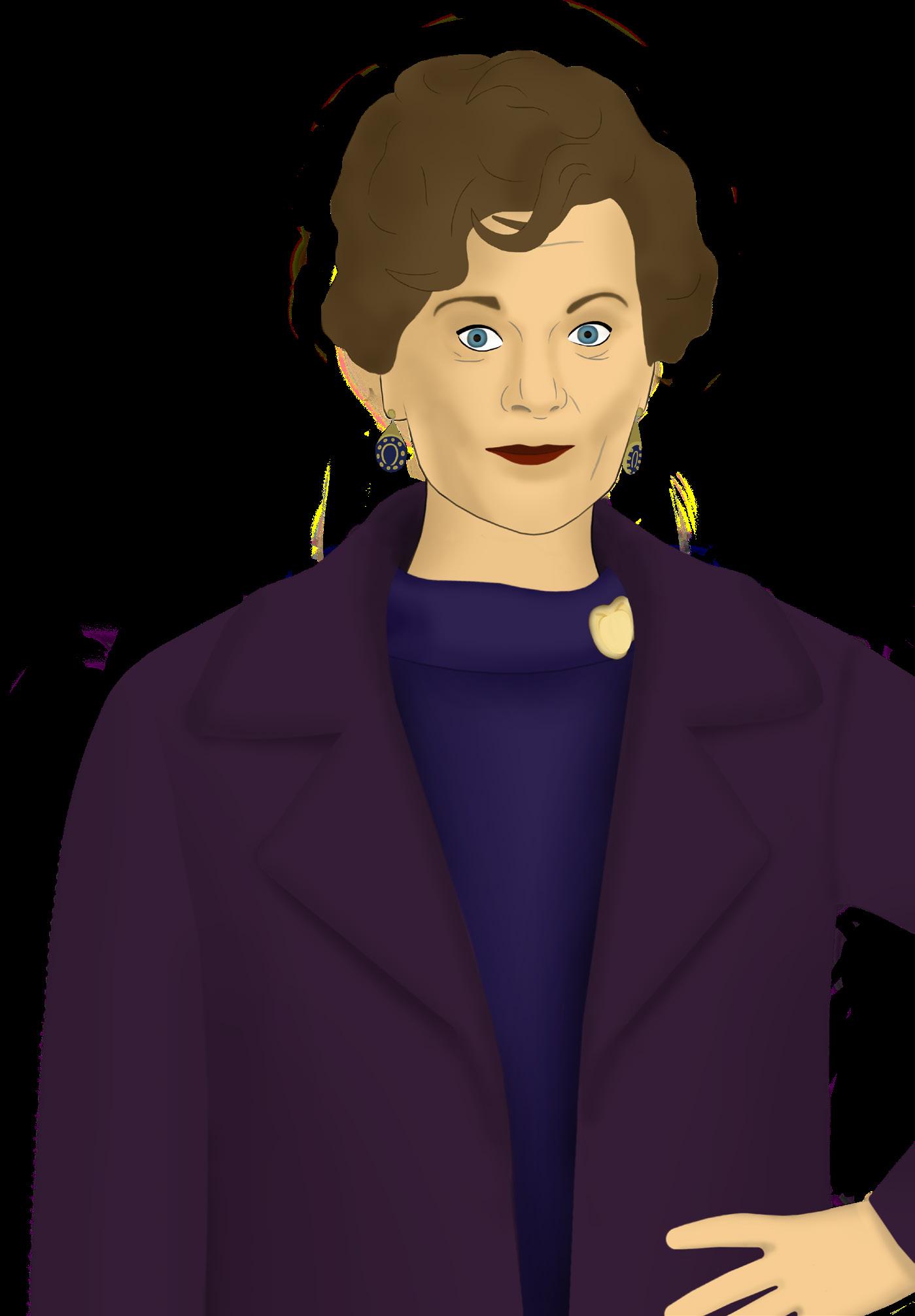
The aliens-archeologists shooting spikes from their heads.
...ok, that’s actually a creative concept. But Orphan 55 setting is completely unnecessary to introduce them or even the conflict between them, TARDIS can be buried in any planet. Does this script make any use of Orphan 55 elements, like Dregs? No? Then I deem this sequel ENTIRELY POINTLESS. Next!
Oh, right, I should probably comment on buried TARDIS thing. I don’t care... we know anyway that the TARDIS team weren’t inside, since the ship abandoned them at the beginning of the story and someone got itself there. Which means that a) Doctor forgot to turn off some auto-return function and it got back to modern day England, where it stood till the apocalypse b) someone summoned it, made a few rounds inside and left it in prefallout England. Presumably The Master, that would explain some plotholes related to him. Either way, it’s not actually as big of a deal as it seems, so I don’t care.
Doctor Who: Adventures
21
HEART AND MIND
MIND THOUGH)
Disclaimer: I’m not autistic and I can’t confirm nor deny whether I’m neurodiverse, so I’m not particularly great authority on how good of representation this episode is for neurodivergent people. I’m instead going to give my own, heavily disinformed take on this, because that’s what I’m not being paid for. Thank you for your understanding.
So we start with ¾ of Earth’s population vaporized and then jump forward a month to see groups of thugs fighting for water and resources- oh no, wait, everything’s relatively normal somehow.
SUSPENSION OF DISBELIEF, ACTIVATE!
I wonder, is this an ego thing? “Oh, Infinity War erased half of humanity? HOLD MY BEER!” Since I have a solid chance of being dead in this continuity, it already scores negative points, because I don’t necessarily like being dead. Ok, moving on. After credits, we get TARDIS team on a crime scene to investigate. Governments and corpos not only still exist (just accept it, don’t ask questions), but are lead by various DS-s and other S-s. I suppose Silicon Valley leadership remained mostly unchanged though, more on that later. Some people think that what happened was Rapture – not the awful Panopticon episode, but an event believed to happen in the end times by some fundamentalist protestant denominations, which (this fragment of review was removed due to explicit language and some very insensitive statements. We respect people of all beliefs even if we don’t respect said beliefs and ask our protestant friends to show some indulgence for this Catholic prick. Yours sincerely, TBWHTK’s kindness).
So you’re probably wondering who’s behind this not-so-destructive event. Maybe those responsible for The Revoc? There actually are similarities here. But no, the culprit reveals itself relatively quickly and it’s completely new race of aliens, who drop some vague talk about unwanted elements and zap Erin and Kyle, much to The Doctor’s... indifference? Whoa. And I thought Fifteen was a jerk. What was the last incarnation not to care about life of their companions? Seventh? Eleventh? Well, disputably
it was in The Last Winter. Was she always like this? Congratulations, episode, you called my sympathy for the character into question.
The Doctor is left with temporary companion named Josh and the case to investigate, so they call The Council of Kids (look, it’s a kids show – it was a matter of time...), which figures that the left behind are all neurodiverse and that this means more than just autistic... which is something I didn’t know. Thank you, show. Perhaps this is why the world did not collapse – if I connect the facts correctly, most of the people with genius intelligence have in fact a form of neurodiversity, which means they are still around and can try to handle stuff. Those with genius intelligence include the most successful informaticians, so probably Silicon Valley companies didn’t suffer much from this event and are even more of dominant power in these new circumstances, since they could mostly continue with business as usual. Man, socialists are going to hate those aliens. But I digress. Do this info make me buy the setting now? No, not really... But it is something.
Speaking of aliens, The Doctor contacts them somehow, blah blah blah, selective social justice, blah blah blah, purge is kind, blah blah blah, look, I’m not gonna elaborate on obvious, but character induced stupidity – the episode has the right to have it. What I am going to talk about is that eventually Council of Kids gets sick of alien mansplaining and they kick the aliens out of Earth with PSYCHIC POWERS!!!
(forms several incredibly goofy faces trying to compute what just happened)
...this is going to take a while.
1) Who thought that “If opposed by someone who sees things differently than you, ignore their attempts at dialogue and just use brutal force to get them out of your way” is a good message to have in a kids show?!
2) One of clever things you can do with superpowers in your narrative is to make them a “visual” extension of character’s identity. That way
Doctor Who: Adventures
22
(MOSTLY
you can highlight that it’s not the powers that make this character special, but the inside, as they are in fact the source of those powers. This is what this episode tried to do, and since neurodiverse people stand out because of their mind, the obvious choice were psychic powers.
Usually I’m a sucker for stories about kids with powers. Heck, my favourite movie of all time is Matilda. However, this is a complete mishandling of the trope. Not only is this a deus ex machina, but also it means that the cast doesn’t have to use any of their skills we knew before to solve the plot. Since I already brought up Matilda – in the third act of her movie she uses her psychokinesis in conjuncture with her genius intelligence. Which makes sense, because they’re in fact one and the same – psychokinesis is an extension of her intellect, and couldn’t have been properly used, duh, wouldn’t have a point, without it. Matilda doesn’t win because she’s paranormal, but because she’s smart, which is a skill that a kid can actually have, and the powers are there as an allegory to give this triumph more visually spectacular form.

Not the case here. Instead, character skills like reasoning and persuasion end up failing, and it’s the sci-fi element that ends up saving the day. Obviously this element was meant to function as a metaphor of the actual potential that neurodiverse people have, but this potential is nowhere to be seen in the
climax, and the metaphor is unclear due to lack of foreshadowing and proper lampshading. As well as ingenuine – it’s not like the actual neurodiverse people can count on their secret psychic powers to solve their problems. They can count on actual skills they have, but – and this is probably my most serious issue – this episode doesn’t spend enough time exploring what those skills are, instead contemplating possible Rapture parallels and comparably useful stuff.
Now, one more good thing that happens at the end of the story (I don’t have to recap that defeating aliens fixed everything and yadda yadda, right?) is pointing out that The Doctor is neurodiverse. Or rather – if you’re neurodiverse, you’re like The Doctor! This one simple message arguably does the job of the whole episode, as – just like bookworms with Matilda – it gives the neurodiverse people a role model, a representative in fiction, and it’s an established character with rich background and skillset that they can admire and compare themselves to. This was an incredibly smart move. Despite that, I can’t say I liked this episode very much. This script is very far-fetched and full of unnecessary padding while lacking the much needed character work. The ultimate judgement on whether this story served its function is not mine to pass, but for me personally, Phil Ford’s approach to “breaking new grounds” continues to underwhelm.
23



The Doctor’s QUOTE of the Month “Attacking
is just as
ignorant
as how some
behave...” - The Fourteenth Doctor, Heart and Mind Issue 05 - March 2022 EDITOR Benjamin Windibank CHARACTER DESIGNS Will Maddox END BOARD FEATURE Toffa REVIEWS Tadeusz Cisłak, Robert Morrison WITH THANKS TO TimeLordMaster108, WimpyKelv12 24
next issue... The Daleks in WIDWWA
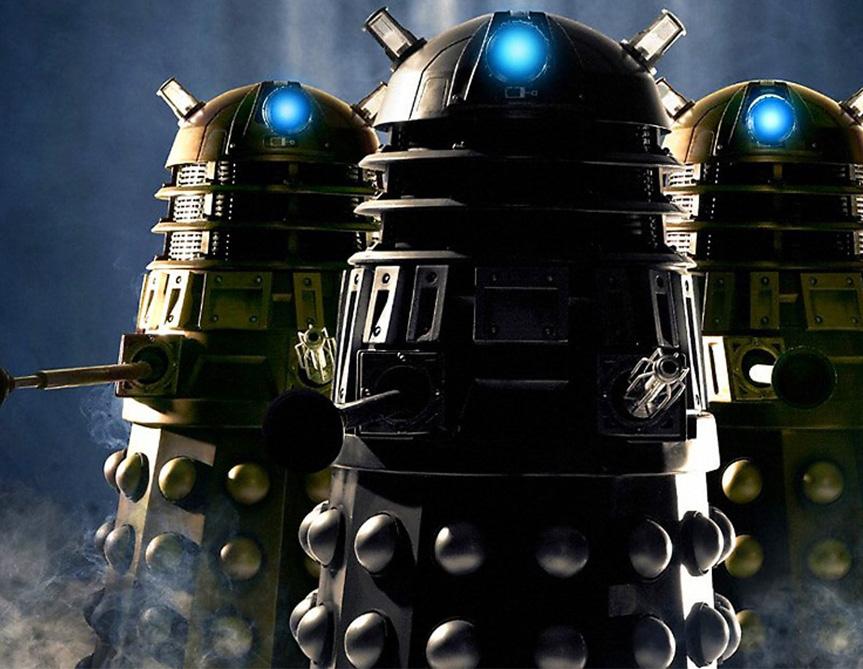
Join the Community!
The WIDWWA community has been based on Discord since May 2021, and is currently a thriving community with over 45 members. But we don’t want to stop there... as long as your a WIDWWA fan and want to contribute a positive non-toxic discussion, and follow all the rules of the server - please come along and join.
Details on how to join the Discord server can be found on the twitter account @ WIDWWA. Additionally, there is some information on the YouTube community tab. If you still can’t get on, don’t be afraid to email DDWF at widwwa1989@gmail.com
WIDWWA has a wiki covering all inuniverse content at widwwa.miraheze.org

The blog with new releases can be found at widwwa.wordpress.com
Submit Fan Fiction
Your fan fiction could be here next month and in future months! All you need to do, to be in with a chance of being featured, is to come up with a title, synopsis and the first 200 words of your story and then send it to widwwa1989@gmail.com, whereby if I like it, I will ask you to write a full 2500-3000 word story, which will be featured in a future issue.
If you do not receive a response, then I will have chosen not to go ahead with your story, at this present time.
Please can all stories be original, feature a WIDWWA TARDIS team and not feature any returning monsters, unless I ask you to during the writing process.
To submit a story, please email widwwa1989@gmail.com
25
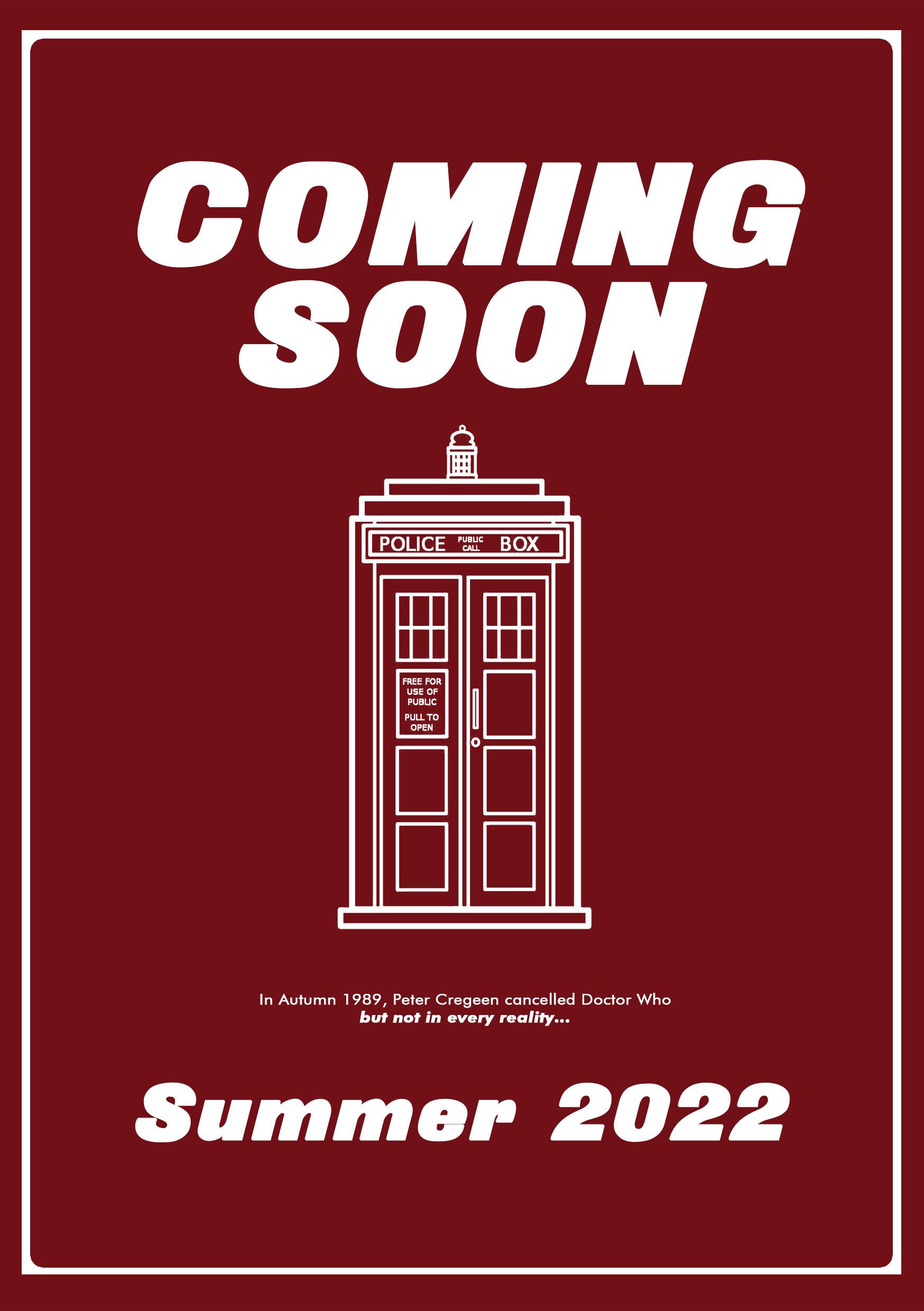




















 Series Three - Episode Eight
Series Three - Episode Nine
Series Three - Episode Ten
Series Three - Episode Eight
Series Three - Episode Nine
Series Three - Episode Ten





























